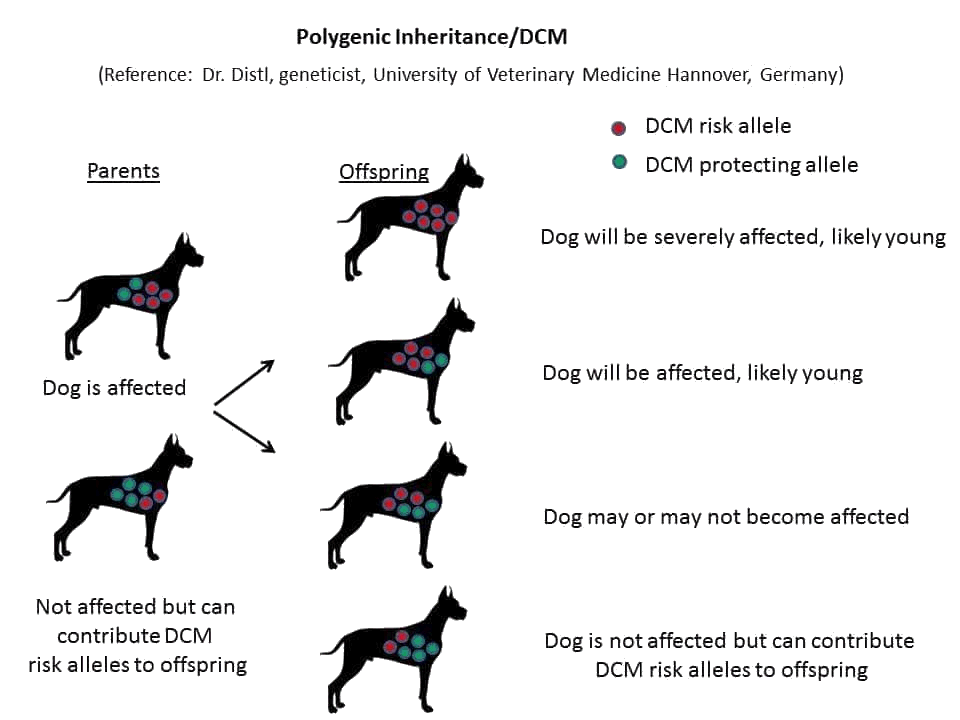Dilated cardiomyopathy (DCM).
Heart Muscle Disease in Dogs
DCM is basically a disease of the heart whereby the heart is enlarged due to the loss of the heart muscle’s innate ability to contract. Both the upper and lower chambers of the heart become enlarged, but one side is usually more severely affected than the other. When the lower chamber becomes enlarged, its ability to pump blood out into the lungs and body deteriorates, and fluid begins to accumulate in the lungs. This enlarged heart becomes overloaded and can lead to Congestive Heart Failure (CHF).

The occurrence of DCM in dogs increases with age, usually affecting dogs between four and ten years old. DCM seem to be more common in certain breeds, such as Afghan Hound, English Cocker Spaniel, Great Dane, American Cocker Spaniel, Boxer, Dalmatian, Newfoundland, St. Bernard and Doberman Pincher.
Symptoms
The major symptoms of DCM are side-effects of the heart not being able to deliver oxynated blood to the body. These symptoms include lethargy, weakness, weight loss, rapid and excessive breathing, shortness of breath, coughing, abdominal distension, and transient loss of consciousness.
Causes
The cause of DCM in dogs is largely unknown. Nutritional deficiencies of taurine or carnitine have been found to contribute to the incidence of DCM in certain breeds such as Dobermans and Cocker Spaniels. Evidence also suggests that some breeds have a genetic susceptibility to the disease. In most breeds, male dogs are more susceptible to the disease than female dogs.
Diagnosis
In addition to a thorough physical examination of the heart, certain medical tests are needed to confirm a diagnosis of DCM, and exclude other diseases.
- Radiographic imaging may reveal left ventricular and atrial enlargement, and the presence of fluid in the lungs.
- An electrocardiogram (EKG) may reveal atrial fibrillation and ventricular tachycardia (rapid beating of the heart).
- An ultrasound of the heart using echocardiograph imaging is required for a definitive diagnosis of DCM. This test examines the size of the heart, and the ability of the ventricular to contract.
- In the case of DCM, an echocardiograph will reveal an enlarged left ventricular and left atrial, and low contraction ability.
How do we prevent it?
Hopefully in the future a test is developed to identify DCM affected and carrier dogs. While the current method of repeated heart screening is very effective at determining if a dog is affected with DCM, it cannot determine whether a dog will develop DCM.
Knowing that DCM is inherited in a polygenic fashion does however give breeders additional knowledge to limit the incidence of this horrible condition in their breeding.


